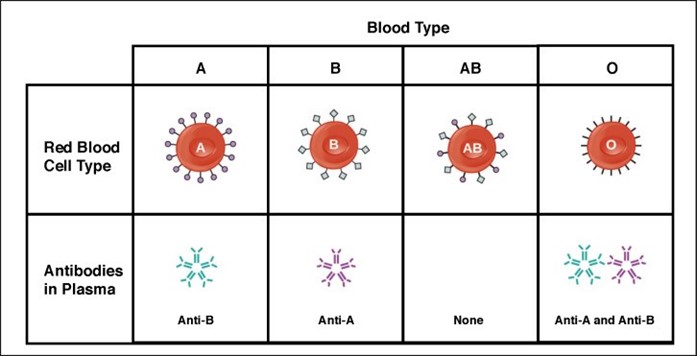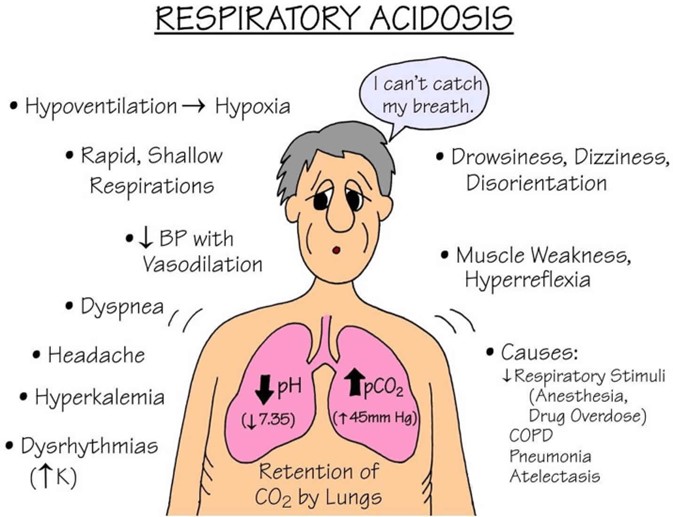A nurse in the emergency department is caring for a client who was injured in a motor-vehicle crash. The client reports dyspnea and severe pain. The nurse notes that the client's chest moves inward during inspiration and bulges out during expiration. The nurse should identify this finding as which of the following?
Pneumothorax
Atelectasis
Flail chest
Hemothorax
The Correct Answer is C
Choice A Reason: This is incorrect because a pneumothorax is a condition in which air enters the pleural space and causes the lung to collapse. It does not cause the chest wall to move inward and outward paradoxically.
Choice B Reason: This is incorrect because atelectasis is a condition in which alveoli collapse and cause reduced gas exchange. It does not cause the chest wall to move inward and outward paradoxically.
Choice C Reason: This is correct because flail chest is a condition in which multiple ribs are fractured and cause a segment of the chest wall to detach from the rest of the thoracic cage. It causes the chest wall to move inward and outward paradoxically, as well as dyspnea and pain.
Choice D Reason: This is incorrect because a hemothorax is a condition in which blood enters the pleural space and causes the lung to collapse. It does not cause the chest wall to move inward and outward paradoxically.
Nursing Test Bank
Naxlex Comprehensive Predictor Exams
Related Questions
Correct Answer is C
Explanation
Choice A: Contacting the provider for further orders is not necessary, because the client has type AB blood, which is compatible with any other blood type. The client can receive type B blood without any adverse reactions.
Choice B: Notifying the blood bank of the discrepancy is not required, because there is no discrepancy. The blood bank sent the correct type of blood for the client, according to their blood type.
Choice C: Administering the blood as ordered is the correct action, because type B blood is compatible with type AB blood. The client will not have any transfusion reactions or complications from receiving this type of blood.
Choice D: Completing an incident report is not appropriate, because there is no incident. The nurse did not make any error or mistake in administering the blood to the client. There is no need to document or report anything unusual.

Correct Answer is A
Explanation
Choice A Reason: This choice is correct because respiratory acidosis is a condition in which the lungs cannot eliminate enough carbon dioxide (CO2) from the blood, resulting in a high level of CO2 (PaCO2) and a low level of pH. A normal PaCO2 range is 35 to 45 mm Hg, so a value of 50 mm Hg indicates respiratory acidosis.
Choice B Reason: This choice is incorrect because HCO3 (bicarbonate) is a base that helps to buffer the excess acid in the blood. In respiratory acidosis, the kidneys try to compensate by retaining more HCO3 and excreting more hydrogen ions. Therefore, a high level of HCO3 (above 26 mEq/L) would indicate a chronic or compensated respiratory acidosis, not an acute or uncompensated one.
Choice C Reason: This choice is incorrect because pH is a measure of the acidity or alkalinity of the blood. A normal pH range is 7.35 to 7.45, so a value of 7.45 indicates a neutral or slightly alkaline blood, not an acidic one. A low pH (below 7.35) would indicate respiratory acidosis.
Choice D Reason: This choice is incorrect because potassium is an electrolyte that helps to regulate the nerve and muscle function, as well as the fluid balance in the body. In respiratory acidosis, the increased hydrogen ions in the blood may shift into the cells in exchange for potassium, resulting in a high level of potassium (hyperkalemia).
Therefore, a low level of potassium (below 3.5 mEq/L) would indicate hypokalemia, not respiratory acidosis.

Whether you are a student looking to ace your exams or a practicing nurse seeking to enhance your expertise , our nursing education contents will empower you with the confidence and competence to make a difference in the lives of patients and become a respected leader in the healthcare field.
Visit Naxlex, invest in your future and unlock endless possibilities with our unparalleled nursing education contents today
Report Wrong Answer on the Current Question
Do you disagree with the answer? If yes, what is your expected answer? Explain.
Kindly be descriptive with the issue you are facing.
